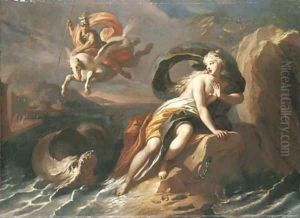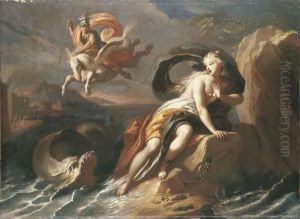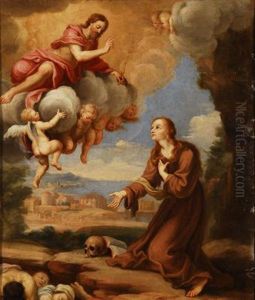Pietro Del Po Paintings
Pietro Del Po was an Italian painter, engraver, and draftsman born in Palermo, Sicily, in 1616. He was part of a family of artists, with both his father, Giacomo Del Po, and his brother, Giuseppe Del Po, being painters. Pietro's work and style are often associated with the Baroque period, a time characterized by dramatic expression and elaborate decoration. He initially trained under his father and later moved to Rome, which was then the epicenter of the Baroque art movement. In Rome, Pietro Del Po further developed his artistic skills, drawing inspiration from the works of the leading artists of his time.
Del Po's oeuvre includes religious and mythological themes, portraits, and landscapes. His ability to manipulate light and shadow, combined with a delicate touch in his engravings and etchings, set him apart from his contemporaries. He was particularly noted for his skill in the latter, contributing to the spread of Baroque aesthetics through his printed works. Pietro also worked extensively in fresco, a medium that allowed him to fully express the dynamism and emotional depth characteristic of Baroque art. His frescoes in churches and palazzos in Rome and across Italy are celebrated for their vibrant energy and intricate detail.
In addition to his work in Italy, Pietro Del Po's reputation as an artist led to commissions from abroad, spreading his influence across Europe. He was not just a practitioner but also a teacher, passing on his techniques and stylistic approaches to a new generation of artists. Among his contributions to the art world was his role in the evolution of printmaking, an area in which he excelled and innovated.
Pietro Del Po died in 1692, leaving behind a legacy that includes not only his paintings and prints but also a significant impact on the development of Baroque art. His works continue to be studied and admired for their beauty, technical skill, and historical importance. Through his contributions, Del Po played a part in shaping the visual culture of his time, making him a notable figure in the history of Italian art.


